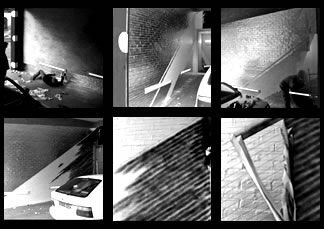- Robert Colbourne
- About
- Working
- Loading Bay Pocket Park
- Exchange
- 29-32 Mary Street
- King Edward VI Sixth Form College
- Tamed [Flood Management Scheme]
- Smithfield Site
- Frames - King Edward VI College
- James Watt Campus, Birmingham Metropolitan College
- Kemble Airfield
- Fargo
- Woodthorne Residential Housing Development
- Muchall Grove Housing Development
- Gravesend
- Meshwork Worcester
- Quadrant, Network Rail National Centre
- 20ft to an Inch [Sustrans]
- Birmingham Coach Station, Digbeth
- South Wolverhampton and Bilston Academy
- Longton Plots
- Pride of Place, West Bay
- Darwin Hall
- Light in Benmore - Optima Housing Association Art-as-Maintenance Report
- Smithfield 1 Proposal
- Interchange
- Turning Wall
- Springfield Brewery
- Constellations, Optima Housing Association
- AFC Telford United
- Stourport Day Book
- Stourport markers
- Changing Landscapes
- Rea Park, Digbeth
- Rea Crossing, Digbeth High Street
- Green Bridge Feasibility Project
- BryantPriestNewman 10
- Longhouse CPD, Confluence and Mythe
- Landscapainting
- Rd
- At any specific
Turning Wall, Jewellery Quarter, Birmingham [2008]

With BryantPriestNewman architects.
Studying the process and patterns associated with engine turning at the former silversmith's premises revealed how integral light is revealing pattern and perspective. The loading bay has both natural and artificial light which both become prevalent at different times of day.Industrial aluminium tape strips placed on a retained original wall, aim to translate the complex visual effects of engine turning to the experience of space through qualities in reflection, due to viewer proximity and position to the static wall, at a particular time. This project also aims to investigate the tension between what is visually and physically public or private in the Jewellery Quarter where sites such as this are not uncommon.

Press release:
An artist/architect collaboration between artist Rob Colbourne and Bryant Priest Newman Architects has resulted in a new artwork in the entrance area of the architects practice. The resulting artwork: “Turning Wall”, reflects the building's former use as a silversmith's, producing the engine-turned barley pattern on cigarette boxes. The artwork creates a 'memory' of the building's former use, whilst also exploring the context and ethos of the present use of the building.
It has changed the perception of the space from something unfinished and leftover, to an event between the road and the front door. The practice have a history of working collaboratively with artists and believe in the benefits artists bring, such as a deeper understanding of place. The ethos of collaboration sits comfortably with them and reflects their spirit of generosity and exchange, an important component of their practice.
The brief invited artists to respond to the surface, texture and light within the space and how it changes the nature of the way 3D space is perceived. It also encouraged the artist to respond to the work and process of BPN, to reflect or have insight into some of the things they are working on and comment on the nature of art/architecture collaboration. BPN were interested in a dialogue, not a straight commission.
Rob Colbourne was an obvious choice. He'd worked with BPN before and both had an interest in each other's working practices. Colbourne was interested in the project also becoming a mutual understanding of language. He became part of the practice, spent time chatting, having a laugh and eating biscuits, working in the space and engaging in in-depth discussions about materials, processes and the nature of the space. It was the dialogue that informed the process.
“It's not my piece of work, it's a piece of work. Something that's going on. Everyone, in some capacity has given something to it. The whole project has been more about getting to know the way BPN think…understanding the way we each work……”
It was important that Colbourne worked in the space in order to develop the conversations, but also to experience the specific qualities of the space, such as the way the light entered into the space, both artificial and natural. Colbourne whittled the focus down to creating lines, as that's what you do when starting a drawing, physically and conceptually, as an artist and architect, but it is also the lines, and the quality of light and reflection, that creates the barley pattern. He wanted to translate the experience of holding the engine turned pattern of the cigarette box in his hand:
“It's less about what the pattern is, it's more about the specific quality of light and reflection, and the way you experience a pattern made from very thin lines.”
Colbourne felt the first layer of silver tape gilded the last remaining part of the building, previously left untouched. The industrious and painstaking process of putting the tape on the wall comments on what is a machine-like process, and what is crafted, reflecting the tensions of the previous use of the building.
Turning Wall is as much about ethos and process as it is about pattern. It is an actual demonstration of thoughts about how to understand space and place.